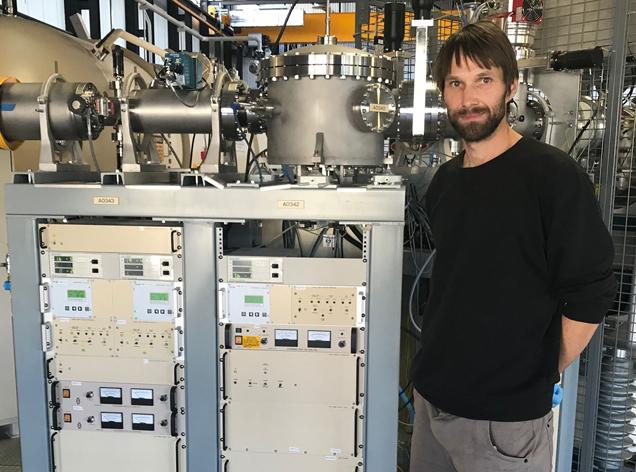

Published on the 6th June 2019 by ANSTO Staff
ANSTO is collaborating on the International Thwaites Glacier Collaboration (ITGC), one of the biggest projects ever to be undertaken in Antarctica that will examine the stability of the glacier.
“Led by UK and US scientists, the five-year project comprises a series of projects to gain a better understanding of the key processes impacting Thwaites glacier,” said Dr Klaus Wilcken, who will undertaking measurements of the cosmogenic nuclides using the Sirius accelerator.

This colossal ice stream in the west of the continent is comparable in size to Britain. It is melting and is currently in rapid retreat, accounting for around four per cent of global sea-level rise—an amount that has doubled since the mid-1990s.
“An essential question in the research is whether the Thwaites could collapse, which would push up the level of the oceans by 80 centimetres or more,” said Wilcken.
ANSTO is contributing to a team which includes Dr Dylan Rood at the Imperial College London who are taking measurements of cosmogenic isotope concentrations in the bedrock below the current ice sheet as part of a larger collaborative group.
The basic principle of this approach is that the presence of significant cosmogenic-nuclides, such as beryllium-10 concentrations in subglacial bedrock, is direct and unambiguous evidence that the bedrock was ice-free in the past.
Knowledge of the history of the ice sheet provides critical data into models that attempt to predict how the ice sheet will behave in the current climate.
“All the logistical challenges of the project, including drilling through up to 700 metres of ice to get to the bedrock, and impact of the data will make it is paramount that the analyses are done without wasting any beryllium-10 atoms.”
“There are very few data sets of the cosmogenic nuclides from glacial bedrock. Counting every single atom of interest, such as beryllium-10, becomes crucially important,” said Wilcken.
A research agreement between Imperial College London and ANSTO was formalised in support of this project.
“ANSTO was invited to be part of this exciting research because the Sirius 6 MV accelerator is now one of the most sensitive instruments in the world to measure the cosmogenic nuclides,” said Wilcken.
Research and development into high-efficiency methods to measure the cosmogenic nuclides on the Sirius accelerator recently published in Nuclear Instruments and Methods B led to interest in collaboration with ANSTO.
Cosmogenic nuclides are rare nuclides produced in bedrock when it is bombarded with high energy cosmic rays. Cosmic ray neutrons collide with specific elements in the rock and cause a reaction that produces isotopes.
Counting the numbers of these isotopes enables scientists to calculate how long the rocks have been exposed to cosmic rays. Dating with Be-10 using this method is effective from a few hundred years to about 5 million years.